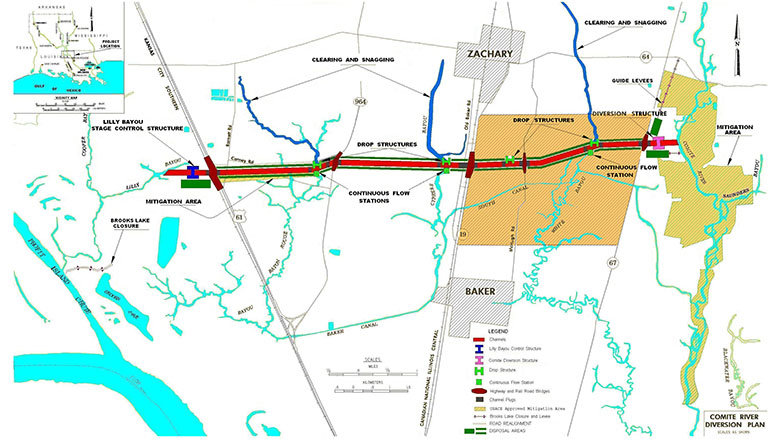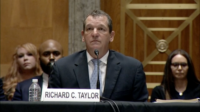Facing tough questioning from Louisiana lawmakers about the status of the 12-mile, $500-million Comite River Diversion Canal project, U.S. Army Corps of Engineers and the state Dept. of Transportation and Development officials acknowledged that the flood diversion project is at least two years from completion.
When fully operational, the project—which began construction in 2019—will have the capacity to pump 30,000 cu ft per second of water from the Arkansas River into the Mississippi River, saving more than 25,000 structures from flooding by engineering eight miles of division channels. When completed, the channel will measure 300 ft wide, 50 ft deep and will be lined with a rock bed.
"There's been a lot of unforeseen things that have come up, and to sit here and think that we've had the last unforeseen issue is naive. There's going to be more issues that pop up," Bobby Duplantier, Corps project manager, told a legislative Joint Task Force meeting last week.
Legislators grilled Corps New Orleans Division and state officials on the continued delays. Project officials said the delays are unavoidable and the project remains a top priority for both agencies. The “desire for urgency is not lost on the Corps and the Dept. of Transportation,” said Col. Cullen Jones, Corps district engineer for New Orleans. The project was supposed to be completed this summer.
The most recent significant delay was caused by the previously unexpected need to relocate two pipelines owned by Florida Gas Transmission.
Construction of a bridge and parts of the canal cannot begin until they are removed, which could take more than 14 months.
Last week, the Corps approved a removal plan, which will be reviewed by the Federal Energy Regulatory Commission in May for possible approval.
“I don’t foresee any permitting difficulties with FERC,” said Mike Futch, vice president at Florida Gas Transmission. “We anticipate this will be a Priority Notice, which typically ends within 90 days.”
Removing the pipelines could cost $40 million, Futch said.
Christina Brignac, a DOTD highway engineer, testified that after the pipelines’ removal—which could start in August—Louisiana’s portion of the construction is set for completion by the summer of 2025. Jones estimates that the Corps could complete its sections by the end of 2024 or early 2025.
The Corps is responsible for three of the four project sections, including constructino of four main channel segments, two vehicle bridges, a railroad bridge and four pump stations. Louisiana DOTD's work includes three vehicle bridges, one railroad bridge, land acquisition and utility replacement.
Duplantier noted other issues including the nationwide supply chain shortage. “We are encouraging contractors to purchase all supplies at once to avoid the bottleneck that has delayed construction,” he said.
During pointed questioning by the task force about costs, project officials said increased pricing for construction materials and labor makes it difficult to provide an accurate cost estimate for thr project, which has been in the works since 2018 and under construction since 2019.
In explaining the delays, Jones said the scope of the project is massive. “Essentially, [we] are redirecting the Arkansas River … It’s absolutely amazing,” he said.
He said several targets were already reached, despite the number of setbacks. More than half the canal is dug, and most new bridges are completed or soon to be finished.





Post a comment to this article
Report Abusive Comment